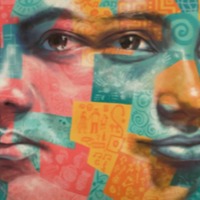
Clara
There are an estimated 403,000 people living in modern slavery in the United States (GSI 2018). Sex trafficking exists throughout the country. Traffickers use violence, threats, lies, debt bondage and other forms of coercion to compel adults and children to engage in commercial sex acts against their will. The situations that sex trafficking victims face vary, many victims become romantically involved with someone who then forces them into prostitution. Others are lured with false promises of a job, and some are forced to sell sex by members of their own families. Victims of sex trafficking include both foreign nationals and US citizens, with women making up the majority of those trafficked for the purposes of commercial sexual exploitation. In 2015, the most reported venues/industries for sex trafficking included commercial-front brothels, hotel/motel-based trafficking, online advertisements with unknown locations, residential brothels, and street-based sex trafficking. Clara* was trafficked at eighteen years old by a man she thought loved her. She was sent to Connecticut where she was forced to work long hours being sexually exploited.
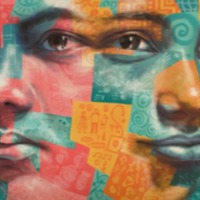
Kyial
There are an estimated 24,000 people living in modern slavery in Kyrgyzstan (GSI 2018). The country remains a source, transit and destination country for men, women and children subjected to forced labour and sex trafficking. Moreover, women in the country are often subject to kidnapping and forced marriage, an act that was only outlawed in the country in 2013 when authorities recognised it could lead to marital rape, domestic violence and psychological trauma. However, in some communities the practice remains common. Kyial was 20 years old when she was kidnapped by an acquaintance. She kept calling her mother for help, but to no avail. Kyial was raped on the first night in her kidnapper’s home. Unlike many other women, Kyial was able to escape. She contacted her friend, who in turn connected her to Open Line, an NGO based in Bishkek that offers kidnapped women counselling and legal advice.
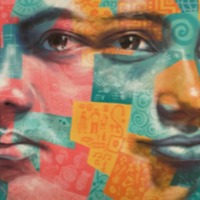
Reem
There are an estimated 85,000 people living in modern slavery in Yemen (GSI 2018). Young girls are subjected to child forced marriage, with UNICEF estimating 32% of girls being married before the age of 18. There is currently no legal age of marriage in Yemen and poverty, the practice of dowry and strict social and religious customs are drivers of child marriage in the country. With the onset of conflict within the country, estimates suggest that child marriage is on the rise. Fourteen-year-old Reem, from Sanaa, was 11 years old when her father married her to her cousin, a man almost 21 years her senior. One day, Reem’s father dressed her in a niqab (the Islamic veil that covers the face, exposing only the eyes), and took her by car to Radda, 150 kilometers southeast of Sanaa, to meet her soon-to-be husband. Against Reem’s will, a quick religious marriage ensued. Three days after she was married, her husband raped her. Reem attempted suicide by cutting her wrists with a razor. Her husband took her back to her father in Sanaa, and Reem then ran away to her mother (her parents are divorced). Reem’s mother escorted her to court in an attempt to get a divorce. She was finally granted a divorce in 2010.
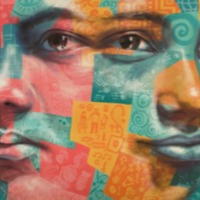
Sagorika
The Global Slavery Index 2018 estimates that on any given day there were nearly 8 million people living in modern slavery in India. The GSI 2018 reports an emerging trend in northeast India where organised trafficking syndicates operate along the open and unmanned international borders, duping or coercing young girls seeking employment outside their local area in to forced sexual exploitation. Many women and girls are lured with the promise of a good job but then forced in to sex work, with a 'conditioning' period involving violence, threats, debt bondage and rape. After four years enslaved in India’s red-light districts, Sagorika was rescued by police and brought to a Sanlaap shelter home.
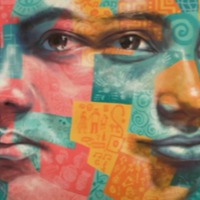
Ganga
The Global Slavery Index 2018 estimates that on any given day there were nearly 8 million people living in modern slavery in India. The GSI 2018 reports an emerging trend in northeast India where organised trafficking syndicates operate along the open and unmanned international borders, duping or coercing young girls seeking employment outside their local area in to forced sexual exploitation. Many women and girls are lured with the promise of a good job but then forced in to sex work, with a 'conditioning' period involving violence, threats, debt bondage and rape. Ganga was sold to a brothel and was forced to provide sexual services to men daily, contracting HIV during her enslavement. She was rescued in 2004 and tells of how she is coping with HIV.
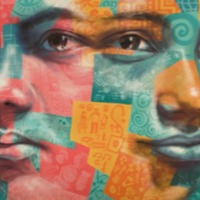
Sana
The Global Slavery Index 2018 estimates that on any given day there were nearly 8 million people living in modern slavery in India. The GSI 2018 reports an emerging trend in northeast India where organised trafficking syndicates operate along the open and unmanned international borders, duping or coercing young girls seeking employment outside their local area in to forced sexual exploitation. Many women and girls are lured with the promise of a good job but then forced in to sex work, with a 'conditioning' period involving violence, threats, debt bondage and rape. Sana was sold in to a brothel as a young girl. She was rescued in 2010 and tells of how her life has changed.
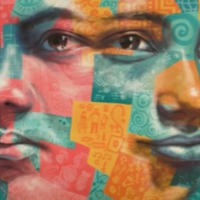
Neelam
The Global Slavery Index 2018 estimates that on any given day there were nearly 8 million people living in modern slavery in India. The GSI 2018 reports an emerging trend in northeast India where organised trafficking syndicates operate along the open and unmanned international borders, duping or coercing young girls seeking employment outside their local area in to forced sexual exploitation. Many women and girls are lured with the promise of a good job but then forced in to sex work, with a 'conditioning' period involving violence, threats, debt bondage and rape. Neelam was 12 years old when she was kidnapped and sold to a brothel.
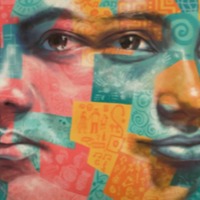
Hania
It is estimated that over 3 million people are living in conditions of modern slavery in Pakistan (GSI 2018). Children are subjected to modern slavery in the form of forced marriage. It is estimated that 21% of girls in Pakistan are married before the age of 18. Child marriage in the country is connected with tradition, culture and custom. It occasionally involves the transfer of money, settlement of debts or exchange of daughters sanctioned by a Jirga or Panchayat. This woman tells of how despite asking to continue with her education, at the age if 19 was forced to travel to Pakistan to marry. Despite being subjected to physical violence, this woman’s family maintained that she must stay with her husband. After five years, she finally left the abuse and is now happily married to a man of her choice.
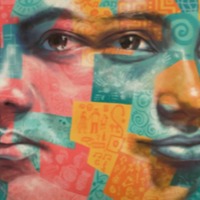
Jambula Prasanna
It is estimated that almost 8 million people are living in conditions of modern slavery in India (GSI 2018). The skewed sex ratio in some regions of India has fuelled the trafficking and selling of women and young girls as brides within India. Women are reportedly sold off into marriage by their families, sometimes at a young age, and end up enduring severe abuse, rape and exploitation by their husbands. It is also reported that women and girls from impoverished backgrounds have been lured by promises of marriage by younger men from urban areas, then forced into sex work once married. Jambula Prasanna, was studying in KGBV when on her return home for vacation learned that her parents were fixing her marriage. Wanting to continue her studies, Prasanna told her teachers who informed Childline to prevent the marriage.
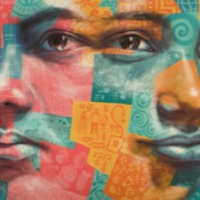
Ponnala Navya
It is estimated that almost 8 million people are living in conditions of modern slavery in India (GSI 2018). The skewed sex ratio in some regions of India has fuelled the trafficking and selling of women and young girls as brides within India. Women are reportedly sold off into marriage by their families, sometimes at a young age, and end up enduring severe abuse, rape and exploitation by their husbands. It is also reported that women and girls from impoverished backgrounds have been lured by promises of marriage by younger men from urban areas, then forced into sex work once married. Ponnala Navya was forced to marry her cousin at 14 years old. After the wedding, Navya was raped by her husband and due to the pressure to conceive, attempted suicide. Though Navya managed to obtain a divorce, her mother was forced to pay a fine and resents her daughter. Navya suffers from ill-health, malnutrition and has carried out further suicide attempts.
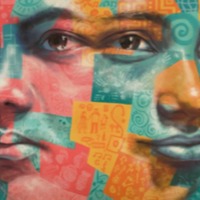
Veeramma
It is estimated that almost 8 million people are living in conditions of modern slavery in India (GSI 2018). The skewed sex ratio in some regions of India has fuelled the trafficking and selling of women and young girls as brides within India. Women are reportedly sold off into marriage by their families, sometimes at a young age, and end up enduring severe abuse, rape and exploitation by their husbands. It is also reported that women and girls from impoverished backgrounds have been lured by promises of marriage by younger men from urban areas, then forced into sex work once married. Veeramma was forced to marry at the age of 12. She works along with her husband on a cottonseed farm, however she does not receive the money she earns. After 3 years of marriage, at the age of 15, Veeramma is worried about not having children, fearing her relationship with her husband if she does not conceive
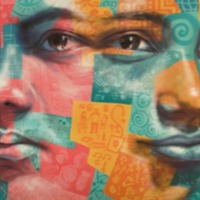
Alina “Tibebe” Cajuste
It is estimated that there are 59,000 people living in conditions of modern slavery in Haiti (GSI 2018). The majority of Haiti’s trafficking cases involve children trapped in domestic servitude as restavèks. They are often physically abused, receive no pay and have significantly lower school enrolment rates. As a result of this, many children flee employer’s homes or abusive families, becoming street children. Moreover, female foreign nationals, especially from the Dominican Republic and Venezuela, are particularly vulnerable to sex trafficking and forced labour in Haiti. Other vulnerable groups include children in residential care centres, children working in construction, agriculture, fisheries, and street vending, along with internally displaced persons as a result of the 2010 Haitian earthquake. Alina “Tibebe” Cajuste was given away as a child to live as a restavèk (a child in Haiti who is sent by their parents to work for a host household as a domestic servant because the parents lack the resources required to support the child). Alina was forced to work long hours with no breaks, no days off and subjected to physical abuse daily. One day Alina finally escaped, travelling to Darbonne to find her mother who told her about her father and why she was given away. Alina found her father and his family, however after his death she was not accepted by the family. Becoming so low, Alina states that it was only with the help of a women’s organisation that she was able to feel like she existed in society.

Deven
India has a population of more than 1.3 billion people, there are still at least 270 million people living on less than US$1.90 per day. While laws, systems and attitudes regarding key 'fault lines' such as the caste system, gender and feudalism are rapidly changing, social change of this depth and scale necessarily takes time. In this context, it is perhaps unsurprising that existing research suggests that all forms of modern slavery continue to exist in India, including intergenerational bonded labour, forced child labour, commercial sexual exploitation, forced begging, forced recruitment into nonstate armed groups and forced marriage. While bonded labour has been outlawed for decades, survey data and pre-existing research confirms that this practice still persists. Bonded labour is not only illegal, research confirms that it has serious negative health impacts for those affected, who typically work in unsanitary and dangerous working conditions with no access to health care. Deven was a young girl when she was forced to work at a mill after her mother had taken a Rs 10,000 advance from the mill owner. Deven was forced to work under difficult conditions and subjected to verbal, physical and sexual abuse.
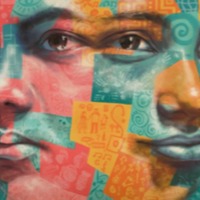
Jiang
Guo Jiang spent 20 years in slave labor within the Chinese prison system. Officially abolished on 28th December 2013, Reeducation Through Labour Camps subjected dissidents to forced labour, torture and terrible living conditions. Some academics suggest that the replacement system, Custody and Education camps, are largely the same as these. Religious and political activists held in legal education facilities previously reported forced labor occurred in pretrial detention and outside of penal sentences.
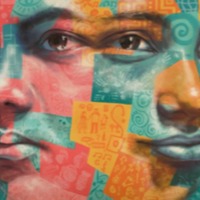
Irene
Irene is an Indonesian woman who was enslaved in Malaysia doing factory work that was hazardous to her health. Foreign workers constitute more than 20 percent of the Malaysian workforce and typically migrate voluntarily—often illegally—to Malaysia from Bangladesh, India, Nepal, Burma, Indonesia, the Philippines, and other Southeast Asian countries, often in pursuit of better economic opportunities. However, workers can find themselves imprisoned, exploited, and in debt bondage. The law allows many of the fees of migration, which are first paid by employers, to be deducted from workers’ wages, incentivizing employers to prevent workers from ending their employment before fees are recovered.
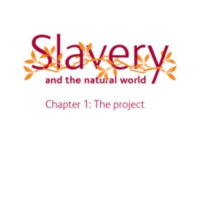
Slavery and the Natural World
In consultation with local community groups, in 2007 the Natural History Museum commissioned new research into its collections that link slavery and the natural world. The research uncovered experiences of enslaved people and the use of plants in their everyday life, as food, medicines and poisons. It also examined the complex relationships between enslaved people and naturalists exploring newly-colonised lands. The museum ran a series of public events, co-hosted by Race on the Agenda, which aimed to bring the historical, scientific and public viewpoints together. It created online educational resources on themes such as Commercial Plants, Everyday Life, Diet and Nutrition, and Resistance. The museum also developed cross-curricular ideas for school lessons in Science using the context of slavery, looking at foods across different cultures, for example.